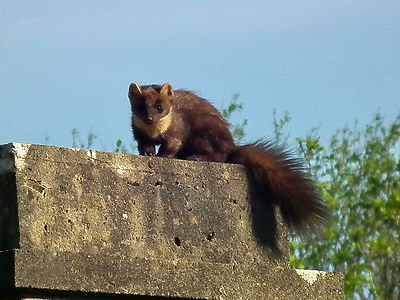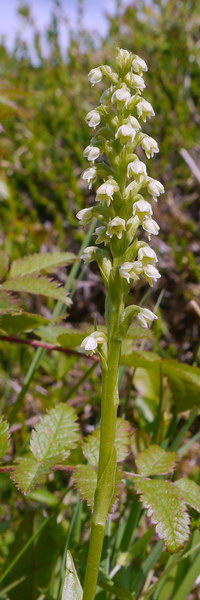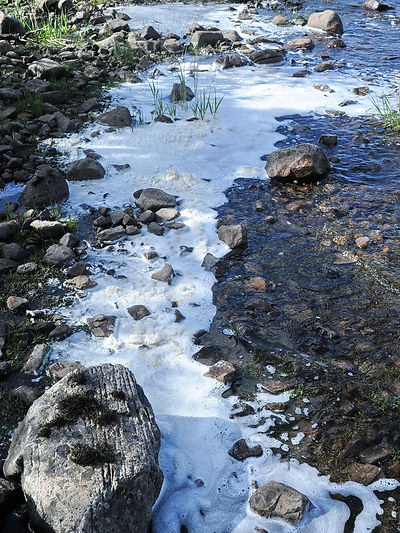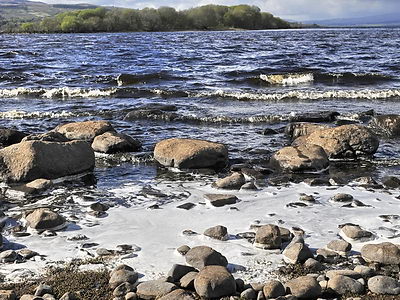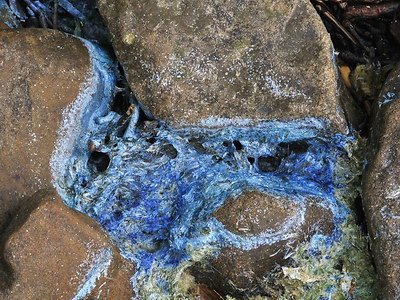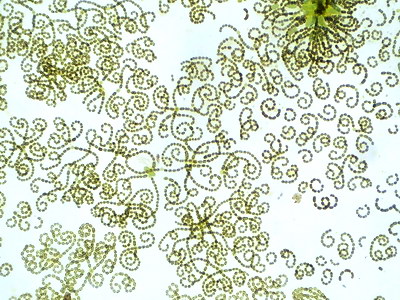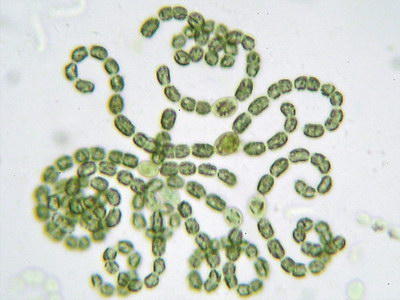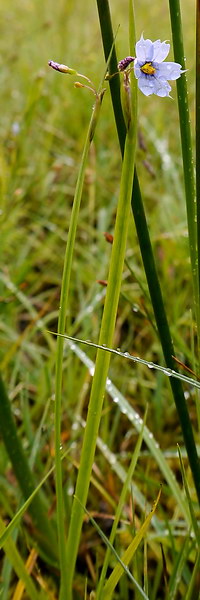We outline Conservation Goals and Pollution Problems for the
|
||||||||||||||||||||||||||||||||||||||||||||||||||||||||||||||||||||||||||||||||||||||||||||||||||||||||||||||||
|
||||||||||||||||||||||||||||||||||||||||||
Review.
Lough Allen is showing clear signs of a degree of pollution and resulting Blue-green Blooms that may be impacting on people living around the lake. We try to suggest ways of addressing these problems and remedy them.
Lough Allen, undoubtedly, has a considerable array of Plants and Animals of significant rarity and local occurrence. It is not designated for conservation, yet it has many species that are worthy of our protection. However, lack of designation can be an advantage to us, if we play our cards right.
While our initial commitment was to create environmentally friendly employment, we soon decided to focus our energies on our area of expertise and seek to promote that aspect as a means to future social development. However, we would never seek to promote conservation at the expense of society. In fact, there is no conflict. A good quality environment will promote progress. And a polluted environment, or a disturbed environment, will only damage the interests of others in many different ways.
Lough Allen is under-appreciated in Wildlife terms. In 2010 we produced a promotional leaflet. (You can see it online HERE.) In it we listed our Top Dozen Spectacular Species. Some of these are very rare in a European context, many are declining, and many would have one of their best Irish populations in Lough Allen. They would include the flowers, Blue-eyed grass and Irish Lady's Tresses; a little known fish, the Pollan; and many birds such as Lapwing, Merganser, Sandpiper and the very much decreasing Curlew, which we didn't even list in that report! All of these might well be affected by changing water quality in Lough Allen with increasing eutrophication and plant growth.
Photo LEFT: Pine Marten. Very successful here, scarce elsewhere.
The landscape of Lough Allen is also spectacular with those brooding high sandstone mountains, the large lake with many islands, and the very distinctive Alder Carr that lines much of the shore — contributing much to the uniqueness of Lough Allen and providing the shelter many of our rare breeding birds enjoy. Geologically, Lough Allen is quite unique being of Carboniferous age but being mainly surrounded by shale and sandstone rocks leading to a slightly acidic environment, different from the mainly limestone lakes further south. These rocks form high cliffs and include fossils and those iron nodules that people around the lake love to collect.
Future Potential in a European Context
We have sought to have Lough Allen approved for an EU LIFE+ scheme. This would have brought much money into the area, protected our wildlife and habitat, and created some on-going employment as well as attracting many European tourists to the area. There was never sufficient support for this idea but we still believe it might, over a period of time, have won European backing. It would appear that such a project would contribute much to the area, fit in ideally with part-time farming, and would help protect this unique place and way of life into the future. LoughAllenBasin.com continues to collect and record Biodiversity data with this goal in mind. However, events arising in regard to the very essence of Lough Allen, its water, have taken up much of our attention over the past few years.
Problems arising in the 2008 - 2012 period.
While very rewarding in terms of the very many interesting aspects of Nature we have explored, photographed, and reported on this Website — it has also been a strange and puzzling adventure with many questions raised and left unanswered.
Signs of Change
In 2008 we first observed a thin white line of foam along the Cormongan shore — and recognised this as something new. But it was small that year. However in subsequent years it was always present but at a low level. It was not until Spring 2011 that it came to a head with massive deposits of persistent foam on the north Shore in early April, a large area of Blue-green Bloom in the centre of the lake associated with foam, and striking bright blue deposits appearing in May along areas of the north shore where foam had been left.
From various observations we assumed that this was a synthetic detergent producing foam and theorised that the algal blooms might have been a result of extra nutrients coming from the phosphate in that detergent. Not categorically proved as of yet, but this fits in perfectly with experience in other European countries where more detergent entering the natural cycle has led to many problems of eutrophication.
We regularly take photographs of this bright white synthetic foam wherever it builds up. We have only once seen a large area of Blue-green Bloom but have good reason for believing it occurred again recently. We take samples and can do basic checks for the presence of the species that may contribute to the bloom. Also the EPA have been very supportive with advice and in establishing a link we can use to monitor future severe outbreaks of pollution
Reducing any Pollution of Lough Allen
To implement conservation goals and to make Lough Allen a safe place for local people and visitors, we need to limit any future polluting of the lake and then start the process of rowing back the harm and restoring the lake to its pre-2005 status or better. We have elaborated on our observations, our conclusions, and our goals for reducing the contamination of Lough Allen in this article and we would be very eager to see such a recovery in place.
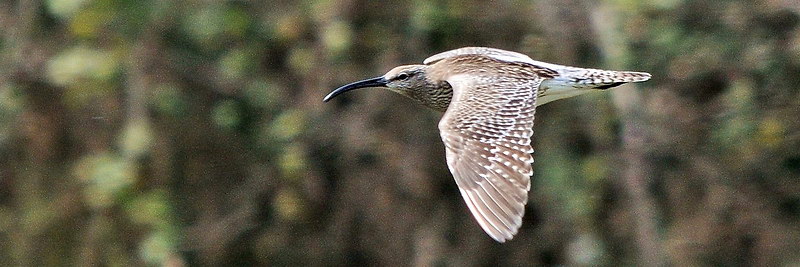 |
Natural Changes.
Many of the difficulties encountered have been natural ones. If you talk to people around the lake you will find that many regard the past 4 or 5 years as quite unusual in their memory of the area. Some hark back to a time when water levels were much lower in the Summer, whereas now water is held back and we are used to moderately high shorelines throughout the Summer. No longer the vast beaches stretching out 100's of feet into the lake.
But to concentrate on the defined period, the incidents of heavy Summer rain seems to be surprising every one. We are observing this from a Naturalists' point of view. Some of the species we are studying live very close to, or on, the shoreline. If the water level rapidly changes then they may be flooded at a time when they are reproducing thus damaging the populations of that particular species.
Global Warming or just random variation?
Of course, 5 years is too short a period to draw wise conclusions over natural events. Nature does have its fluxes. One minute it is up, the next minute it is down. Nature and climate are closely intertwined. Infections or predation may suddenly wipe out a population of plants or animals. Similarly, a drought or a flood may devastate wildlife, just as much as it hurts us. But these are all natural and (usually, reversible) processes. Such events should not permanently change our landscape or nature that surrounds us.
It also must be remembered that these patterns also reverse and we tend to be selective in our memory — think of all those sunny days of our youth! We thought our Winters were getting milder; then along came 2009 and 2010 when we all had to watch our very water supply. That is why meteorologists study climate over a very long period and only update their reference standards over many decades, as the Irish Meteorological Service has done recently. It is essential in Science not to jump to conclusions but when you see one of Lough Allen's rarest and most beautiful plants washed out by Summer downpours it is natural for the heart to talk persuasively to the head and say... the world is changing for the worse! When, in reality, it may not.
Natural cycles come and go. If left to themselves few of them are irreversible. Major life changing events such as huge floods, volcanoes, or mountain slides, are rare around the world and almost unknown in Ireland. They will leave a re-worked landscape that may eliminate some species but almost inevitably provides other opportunities for different forms of life. The high Summer rainfall phenomenon that we have experienced in Ireland over recent years may simply be a short term aberration and more 'normal' Summers may return — or they may not!
Man made changes may, however, have a permanent or continuing effect on a habitat. (We talk about these later.) When weather or climate change seems to be responded to by a plant response, then you begin to wonder are we really dealing with global change. The orchid we referred to above (Spiranthes romanzoffiana) occurs in north west Ireland, the Western Isles of Scotland, and the continent of America. It is an orchid of cool treeless environments. In both of those locations it is showing a northerly movement. In Lough Allen, even, its once strong southerly populations have died out and it now only occurs on the northern end of the lake. Is this fact or just coincidence?
|
Here we are talking about changes that are managed by Man but brought about through natural processes. Afforestation is a good example. Leitrim, Roscommon and Cavan are the counties that form the natural hinterland for Lough Allen. Over the past 20 to 30 years they have been heavily planted with largely single species conifer plantations. These are now mature and are being felled in vast swathes. This leaves large areas of bare mountain exposed to the elements and this leads to rapid water (and soil) run off which exposes Lough Allen to more rapid changes in the quantity of water entering the system and contributes to flooding of lands and urban areas downstream.
Thus this forestry policy causes massive impact in simple hydrological terms. Furthermore it is difficult to re-establish forests in these upland cut areas with increasing rain and possibly wind exposure. We have seen many cut over forests with new plantation losing the battle to survive. However, these are good places for orchids and native trees such as willow and alder that are fairly tolerant to flooded environments. This may be the secret to managing the flash flood risk that the traditional policy of clear felling generates. A re-growth of native species may be both a valuable nature resource as well as a source of valuable fuel. Alder, to many people's surprise, is not only very rapidly growing, but also a good domestic fuel.
In whatever way possible, these vast areas of scarred hills should be allowed to re-cover rapidly if for no other reason than to hold back some of the increasingly heavy rainfall we seem to be experiencing in recent Summers. It's good for nature, and it's good for us!
Other impacts of Forest cutting.
We are conscious of the recent problems with algal blooms in Lough Allen. Whereas, we believe, these are mainly attributable to unnatural causes, it is possible that some of the factors triggering this algal growth may stem from nutrients released suddenly when large areas of forest are felled. Not only are the nutrients released through tree cutting but the process of clear felling also allows these nutrients a clear and rapid pathway into Lough Allen.
Why do nutrients get released through tree felling, and what are they?
Nutrients is a word we use as a 'polite term' for inorganic material that acts as a stimulus to plant growth. Every habitat has a balance between the amount of nutrients in the system (or entering the system) and the amount of plant life (and subsequent animal life) that that system supports. If the amounts of nutrients entering that particular ecosystem suddenly increase then there is excess food present for the resident organisms. (It is called eutrophic, which literally means 'well fed'!) This tends to result in quickly reproducing species starting to reproduce rapidly — typically algae and bacteria. These burgeoning populations of micro-organisms can appear as a bloom within a day or two. Some blooms are toxic!
In clear felling large amounts of vegetation are destroyed but still left on site. The logs are removed; the tops are, traditionally, crushed into the earth. Nutrients derive from this material. Also when planting a forest heavy use is often made of the typical NPK inorganic fertilisers. These need to be carefully managed and may not always be done so in our particular area. For example, Teagasc states that... 'Where marl occurs within 70 cm of the soil surface, sites are classed as unplantable.' Many sites in Leitrim, in particular would have marl present at much shallower depths, and yet are planted. Maybe this is not so much a risk on hills due to lower presence of marl in such areas. However, they also state that in difficult sites an initial application of phosphate may not suffice. Can you imagine what subsequent fertilisation of mature waterlogged sites would result in — heavily enriched water entering streams and eventually getting into the lake as excess nutrients and causing eutrophication!
However are there other semi-natural process going on in the Lough Allen basis at present...
What other semi-natural changes are there?
Increased water run-off from an urban environment can be generated through more and more paving, public parking, large mown grass areas, paving of front gardens, and generally reducing the areas where rain water can either enter the soil or be taken up by vegetation. However this may not necessarily mean that the increased water run off is either contaminated or rich in nutrients. That may or may not be the case. Because of its largely rural context we don’t think that this is likely to be significant source of eutrophication for Lough Allen.
Other interactions between man and the environment often pointed to as leading to the release of nutrients would include farming and turf cutting. All farming activity we have come across on the Lake seems to be very carefully managed in terms of operation and not excessive in terms of application of either compound fertilisers or slurry and farmyard manure. We have never come across an instance of obvious contamination in our journeys anywhere around the lake either by foot or by boat — nor would we expect to knowing many of the farmers and how they respect the countryside.
There is one bog on the Roscommon side of Lough Allen which has (on occasion) been actively 'mined' using heavy machinery. This is a pity as it is an important bog and the methods used damage large areas of the surface as well as taking out large chunks of the bog which people are frequently unable to stack and save. We would totally support the hand winning of turf in the traditional manner as this is less harmful environmentally and minimises the incidental damage to the bog adjoining the face being worked.
However, this is a lowland raised bog with very little leaching into Lough Allen. Any released fossil nutrients are more likely to enter the Shannon downstream of Lough Allen. But the destruction of the habitat for plants and animals in the future, and the amount of lost climate amelioration that a healthy bog can support, is to be regretted. Otherwise bog cutting is minimal around Lough Allen and we don't believe it can be a significant contributor to the enrichment of the water of Lough Allen.
More exotic possible culprits might include high levels of pollen from surrounding forestry and the import of inorganic growth pro,oting elements from unknown sources. However, we would not expect any of the processes described above for either natural or semi-natural change to produce the sort of signs and indicators that we have been seeing around Lough Allen in recent years. Lough Allen is a large and deep lake with a high rate of water replacement. We assume it would be well able to adapt to an increased supply of nutrients of a natural origin more effectively. Instead we have seen a rather dramatic change from a time 5 years ago when visible signs of contamination where almost unknown to the present when almost every day at some point of the lake evident signs of the effect of persistent and artificial contaminants can be seen. The quality and nature of these contaminants is discussed in our observations in our previous study of Water Quality.
Man-made Impacts on the natural environment.
Unfortunately the signs of change we talk about in our Review, and the absence of a clear natural cause for these, brings us back to the age old thesis... "something must be happening!" It is often easier to detect change by observing its impact than by seeing its cause. In fact it is often quite difficult to prove the cause, or find the agent, that is producing the changes we observe.
Such is the case in Lough Allen. We have seen small changes over the whole period of this study but only began to notice them on a regular basis 3 years ago and were first seriously concerned by the mass pollution incident along the north shore of Lough Allen in 2011. This was the first occasion that we became convinced that this material was not from a natural source, and we began to study it in detail so as to try and understand what was going on?
Is there continuing process of low-level pollution going on?
To date, it seems that many people do not accept that there is a serious decline in the quality of Lough Allen's water and that it may sometimes not be safe to swim in. We accept there is a lot of genuine opinion here but feel that other folk are just saddened by these events and want to avoid thinking about it? If there is a serious process of pollution going on in Lough Allen, and if this has been rising incrementally over the past 5 years, then we can only assume that it is due to some change in our activity and some artificial contaminants that are being let into the lake either deliberately or inadvertently. We ignore such changes at our peril.
Despite close monitoring, and for very good technical reasons, we have no clear or precise idea of the source of this pollution. This, in itself, is interesting. If it was sudden or localised, one would suspect a 1-off pollution incident. That it is incremental and widespread implies that there are many small sources of contamination...
What are the characteristics of Pollution being detected?
|
|
Appearance and tracing. Tracing pollution is a notoriously difficult task. It can be done by visual observation, chemical or physical tests, or by microscopical examination of algae (for instance). We think that visual observations are probably the most sensitive and accurate of these approaches; they will show results where testing may be ineffective due to high dilution of the material, or where algae may not start to bloom due to cold or windy weather. We rely on cold and windy weather to help us indicate current or growing levels of synthetic detergent based materials in Lough Allen. We ascribe the changes in Lough Allen to such man-made materials for good reasons. Foaming on lakes can be from natural sources and has always been present in Lough Allen. It comes from rotting material, and forestry and bogs, and anaerobic ooze. The significant foam we have witnessed in the last five years has different properties. It is intensely white though may be contaminated by flies or sand or soil on the shore lines. It can form very thin but continuous lines at the waters edge on shores facing into the wind. It is persistent and very finely bubbled. i.e. it will maintain shape on the shore, unless blown away in the wind, very like soft meringue mix! The bubbles do not rapidly burst as do the larger less white bubbles of more 'normal' foams. In calm weather all signs may disappear but will re-appear within minutes at the advent of only slight breeze and gentle waves on the water surface. This is a characteristic of synthetic detergents. The foam is very similar in appearance and behaviour to that generated by washing-up liquid and bubble baths. Similar foam can often be seen in drains near to houses where a modern mechanical Septic Tank has been installed and bath and washing water is going through the Septic Tank! |
|
|
We would assume not; though if its source is through Septic Tanks, or other sewage treatment, it has obviously been associated with bacteria. It would probably have been cleansed of these through the dilution factor of the lake and it is simply the persistence and re-foaming properties that is enabling this material to be detected when agitated. We doubt if there is any physical or chemical test that would be able to detect this material at this level of dilution. We would love to know if there was as it would be the ultimate proof of our theory of what is causing the changes in Lough Allen. However, in calm weather in April of 2011 we saw a thick band of this foam following a course down the middle of Lough Allen west of Cormongan. We assume this material had been concentrated by lake currents. Either side of it was a long narrow strip where Blue-green algae were actively propagating. These are what can produce the toxins that are poisonous to dogs and irritating to humans. This is the closest proof we have that the agents which were producing the foam were also feeding the algae — and it is the algae that are potentially toxic. The only other strong circumstantial evidence we have pointing in the direction of synthetic detergents is in the relationship of large 'synthetic foam' deposits on the north shore line of Lough Allen in Spring 2011, to very striking deposits of bright blue material in places where the greatest amount of foam had landed. This colour is typical of Cyanophyceae — the proper name for Blue-green algae. (The name itself means 'blue green organisms'.) The living organisms are actually green (due to chlorophyll) and only produce the cyan colour at maturity. The implication is that Blue-green algae were gathering nutrients from the foam in hot calm weather and were then later washed up on the north shore by prevailing winds. All these hypotheses need to be proved but they probably provide a reasonably accurate basis on which to seek to monitor and reduce the level of nutrients entering Lough Allen. Photos on LEFT Top: On one of those days when we saw little pollution we rounded an island in the south of Lough Allen. This is a place much loved by the Common Sandpiper. (April 2012) Middle: A Spring day looking out from Cormongan towards Long Island, with a strong westerly breeze. (March 2012) Bottom: The famous blue deposits from the north end of the Lake. (2011) |
|
|
What is the source of this contamination?
If we accept the equation...
Synthetic detergent ---> Nutrients ---> Foam ---> Warm calm weather ---> Cyanophyceae Bloom ---> Toxins may occur!
...then we are clearly facing a problem of increasing waste material being released into the lake in significant quantities. This is a disturbing prospect as Lough Allen is a large lake with a low population and a high level of rainfall. Theoretically it should be very resistant to pollution. Does this mean that the level of pollution is significant and on-going? It would seem so.
Also the presence of suitable water pollutants seem to be widespread around the lake. Initially we thought that the source may have been at the south end of the lake, but this was just due to a long period of strong southerly winds in early 2011. Now this foam shows up on any, and every, shore when the wind is blowing directly onto that shore. Similar material is also evident in many other lakes in Ireland. In this area we know of problems in Lough Meelagh and Annagh Lake.
If this is a detergent we are obviously looking at all sorts of washing products and their use in an industrial or agricultural or domestic setting. Also the source of the material is widespread, not a single point. Build up of such foam can also be seen in nearly all streams and rivers entering Lough Allen. The presence of the persistent foam in Annagh Lake is interesting. It is fairly new in origin, there is no industry in the area — not even a car wash, and Annagh Lake while formerly a branch of Lough Allen, is now blocked off by reeds and has a water level nearly always somewhat higher than Lough Allen's. i.e. you can see water flowing out of it into Lough Allen!
So, the likely explanation is that this foam is coming from a wide variety of sources around Lough Allen and the only likely explanation is... Septic Tanks. And specifically those modern Septic Tanks which the Council specified, which had to take grey water as well, and which could be placed close to drains and streams! The timing of the appearance of the Lough Allen foam would also tie in nicely with the building boom and the large scale installation of such units during that period.
The Technical Stuff...
Schematics of powered Septic Tanks and Planning guidelines at the time.
Types of Spetic Tanks:
Illustrations and diagrams of various models of New System Septic Tanks (mechanical) can be found at SiteAssessor.com very comprehensive website. Look in the Manufacturer’s Specifications in the Brochure Section under the Information tab. These are Septic Tanks with separate sections for sewage settlement and digestion, aerated further bacterial digestion, and a sludge removal and discharge to percolation section.
For people with traditional older Septic Tanks these can produce excellent results if sited in accordance with traditional guidelines — a safe distance from a drinking water source and from any drains or streams. We feel one of the problems with mechanical operated treatment systems is that people regard them as ‘wonder machines’ — and have allowed their placement and discharge into nearby drains thus allowing nutrients and foam to enter Lough Allen — whilst they are really only slightly augmented older systems. Both systems have no treatment for phosphates emanating, for example, from washing and laundering. The quote below is very encouraging for anyone worried about an older system.
In the EPA’s CODE OF PRACTICE for WASTEWATER TREATMENT SYSTEMS for SINGLE HOUSES they state...
“In the absence of a connection to a sewer system, one of the most appropriate and cost
effective means of treating wastewater in a suitable site is a properly constructed
and maintained conventional septic tank system.”
NOTE that there are substantial riders to this endorsement. We assume that proper construction would include an adaquate soil percolation area, something that may be difficult in poor draining Leitrim soil. (See layouts of Percolation areas in the Site Assessor Site Layout link.) We believe a suitable site would refer to the need to keep all Septic Tank effluent well away from drains and streams until it has been thoroughly neutralised in a soil percolation area or, ideally, a dedicated biological absorption area — possibly a reed bed but trees and other natural vegetation in a quiet corner of your garden also do a great job and are safer. Maintenance of a traditional Septic Tank, in our opinion, is less about too frequent removal of sludge, and more about maintaining the percolation area and controlling the amount of non-sewage waste that enters the system (e.g. detergents, non-biodegradeable paper, and kitchen grease.) These are better disposed of in other ways.
Planning Guidelines presently in force:
In Planning Leaflet 4, Leitrim County Council simply state:
“If no public sewerage scheme is nearby for the safe disposal of household wastes, you will need a system such as a septic tank and percolation area. Your site will have to be large enough to accommodate this and not all sites or soil types are suitable. On heavy soils, ponding of effluent can lead to public health hazards, nuisance and pollution of watercourses.”
We would merely observe that in recent years we have seen many instances of tell-tale foam appearing in drains and streams where, we assume, Septic Tanks have recently been installed too close to these waterways. We link this observation to the steadily increasing visual signs of pollution in Lough Allen since 2008.
The word 'detergent' is a broad term but generally well understood. They are in fact quite recent in origin and serve a different function to soap. Soap for example does not work well in hard water, and soap does not break down fats satisfactorily. Detergents cater for both these requirements by a) containing a large proportion of water softener, and b) having chemical compounds that are in one part soluble in water and in another part soluble in oils. That is how detergents so quickly clean our greasy plates. Detergents work because they can attract both water based and fat based dirt!
These compounds are called 'surfactants'. These surfactants are commonly anionic alkylbenzene-sulfonates and may make up 15% of your washing powder. The fat loving part is the alkylbenzene, and the water loving part is the sulfonate. The large molecules can have two structures, branched and linear. The branched molecule was found to be very slow to degrade and the linear formula was introduced to improve pollution problems and reduce persistence when these chemicals got into the environment.
A major problem with Detergents is that they can contain up to 50% by weight of Sodium Triphosphate. The function of this bulk material is to soften hard water but, in its molecule, it does contain the major plant nutrient, phosphate, that we are concerned about in Lough Allen. Phosphate has led to major problems with eutrophication of waters all around the world where detergents are used. This can be replaced with Zeolites which are naturally occurring porous microspheres which can absorb Sodium and Calcium ions and act as a water softener
"With respect to the phosphate additives, between 1940 and 1970 the amount of phosphates in city waste water increased from 20,000 to 150,000 tons per year. With an increase in phosphates, especially in the absence of species feeding upon algae, algal blooms grow splendidly on the excess phosphorus and consume most of the oxygen in the waters, killing fish and plants." (Wikipedia on 'Laundry Detergents')
The reason why these high phosphate levels have become a problem in recent years correlates very closely with the increased installation of mechanised Septic Tanks during the building boom — and their placement close to watercourses. Nothing in these systems treats detergent waste; they are merely designed to break down sewage effectively. The detergents and their associated foams come straight through the systems and into our streams. In the past this material would have gone into dispersal systems and have been used by grass or trees nearby to stimulate an extra flush of growth.
How do Blue-green Blooms occur?
|
|
The Bacteria: All living organisms have been classified into 6 Kingdoms these days, including the Plant and Animal Kingdoms. Despite being green and photosynthetic, the Blue-green Alga belong to the Bacteria Kingdom. Maybe this explains why they can be so toxic? A shortened family tree of one of these Blue-Green algae would read as follows: KingdomBacteria Phylum Cyanobacteria ClassCyanophyceae Family Nostocaceae GenusAnabaena As you can see it is all very complicated. There are numerous species in the Genus Anabaena and many strains within each species. To give a striking impression of the group we are dealing with we reproduce a photograph taken last year of another member of the Nostocaceae family we observed in Lough Allen. (See LEFT) This bacteria is interesting for 3 reasons. Firstly, it being a 'first cousin' of the polluting organisms. Secondly, because it is monstrous by comparison with the organisms forming the bloom (golf ball size). And, thirdly, because unlike those Cyanophyceae, it is a sign of clean water and is not toxic! However it does show features typical of the Cyanophyceae in general. e.g. upwards movement in the water in times of good weather so as to improve its ability to photosynthesise. |
|
|
|
|
|
The process of bloom formation can be described as follows. Excess nutrients entering the water typically in the form of detergents. The stretch of water being oligotrophic (i.e. not used to a rich nutrient supply) with few plant eating organisms. Calm weather enabling the Cyanophyceae to surface from the deeps. Sunshine and warm water encouraging photosynthesis. In these cases mass reproduction will take place and a bloom results. Under such circumstances a bloom is CERTAIN! Whether it will produce toxins depends on other factors. |
|
|
Photos on LEFT These are reproduced just to give an impression of what we are dealing with. They are mainly Anabaena sp. and were taken from samples collected at the Locks at Drumshanbo on the 6th. June 2012. Cyanobacteria were present in good quantity but were not present in a bloom. They can be seen as very small green flecks, like pepper in Lough Allen’s dark brown water. This green-spotting is now becoming a feature of Lough Allen and in a recent boat trip these green spots of Cyanobacteria were universally present across the northern section of the lake from Spencer Harbour in the west to Church Island in the east. No where was a ‘bloom’ seen, but the scene is set for a major bloom in typical Summer weather. NB. We are neither equipped or qualified to make detailed comments on the samples shown here. But we are in receipt of advice from the EPA and this is much appreciated. We feel our job is to promote awareness and, hopefully, bring about steps which will lead to an improvement in the quality of water in Lough Allen. |
Pollution or Restoration: Costs and benefits.
The cost of pollution is best quantified in social and emotional terms, though it may in the long term have significant economic implications. If we seek to attract tourists or seek to develop the area for outdoor sports, and if people find that there is a significant level of pollutants in the water, then (we assume) they will vote with their feet and simply not return. Many people coming from Britain or some parts of Europe will be familiar with white foam lines and will know what it means. Indeed they may be coming to Ireland particularly in pursuit of our 'clean green image'. Sadly many parts of Europe, though more developed than Ireland, boast clean fresh lakes that are used by everybody for swimming in even in the hottest of weather. That is the standard to which we must aspire.
At present we are facing the dilemma of seeing people enjoying the water of Lough Allen with their pets. Should we speak, or should we keep quiet. At present, we keep quiet but, if we know another bloom is present should we not tell people that there is a bloom out in the lake? We know other people are facing different decisions. Is it safe to get new pets? Can our kids spend happy times paddling? Is it safe to go windsurfing?
The only way to answer these questions is to say, Yes! But to be able to say, Yes, we must be confident that all contaminants have been removed from the lake and the enrichment that has lead to blooms has decreased to a normal background level that is unlikely to support Blue-green blooms even in sustained hot calm weather. This may only mean reverting to conditions that prevailed up to, say, 2005. We are not aware of any records of algal blooms in the lake before that date. It is possible there were, and they either went unrecorded or we have missed the reference. (NB. We'd appreciate any more information on this.) Unfortunately, Blue-green blooms can be hard to detect from the shore — but the white foam marker line is very visible and recognisable though only present in a particular location when the water surface is disturbed and the wind is blowing onto your particular shore?
Pollution destroys the social, economic, and environmental value of the lake. It is being allowed happen for little reason. We don't think anyone is benefiting by allowing detergents enter the lake. We don't believe anyone is saving a few pence by not putting in the proper safeguards. We simply accept that a mistake has been made, possibly in all good faith, and we are now paying a very high price for it. However, the good news is, that this process has been steady and incremental rather than catastrophic. So it should be reversible by studying changes in waste management in the area over the last 5 - 10 years and reviewing those changes which may be suspect.
|
A Zero pollution Charter for Lough Allen |
|||
|
A. |
Strict policing of any dumping or tolerating dumped material deposited on land. |
|
A considerable amount of rubbish is present all around Lough Allen's shores. Truth be told, a lot of this is reasonably old. But you can still see a steady supply of plastic and other detritus drifting down the Shannon at the north end of the lake. We have often intended to try and remove such material |
|
B. |
Requiring all anglers and boat users not to pollute or leave waste behind them. |
|
This would include washing effluent from Cruisers, though we have no evidence that this is a problem. |
|
C. |
Limiting all discharge from all septic tanks into any ditches, drains, streams, rivers, pond or lakes, within the Lough Allen catchment area. |
|
A practical approach should be adopted to enable people to comply willingly and effectively. |
|
D. |
Restricting the use of detergent products out-of-doors for fear that they might run down a driveway or yard and enter a stream. |
|
Car washing anywhere near open water should be banned and the disposal of waste from Garage car washes should be carefully processed. More environmentally friendly ways of cleaning cars to be researched. |
|
E. |
Use less washing agents in washing machines and dish washing and less Bubble Baths! |
|
Washing can be done just as well with less detergent. Washing waters from laundry and baths and showers should be kept separate if feasible. |
|
F. |
Better forest management so trees are not planted on unsuitable land or excessive inorganic fertilisers be required. |
|
Felling be done progressively so as to control water and nutrient run-off. |
|
G. |
No pipes policy. Discharge pipes into Lough Allen and its catchment be eliminated or registered and monitored if strictly necessary. |
|
Extracting water from Lough Allen or its water sources using slurry spreaders, or other agricultural equipment, be done only under strictly controlled standards. |
|
H. |
Monitoring selected rivers and follow up any foam present to its likely source. |
|
At present the foam is only too easy to see. |
|
I. |
Monitoring Lough Allen's shores until linear foam there is as rare as it was in 2007. |
|
This seems to be a very valuable indicator of the presence of pollution. |
|
J |
Grant aiding for people having difficulty meeting these standards, or where their problem is directly as a result of following Local Authority directives. |
|
It’s fair, in the common good, and protects our natural Heritage. |
|
|
|
|
|
None of the above measures should impose major difficulties for anyone. It is merely about applying standards and controls that have, perhaps, fallen a bit by the wayside in our haste to modernise. These old values should help to return Lough Allen to its former healthy state for the benefit of all. It will mean that people on the water are safe, children and animals can swim without any concerns for their health, the shorelines are no longer despoiled, and (maybe) our wildlife will come back in ever greater numbers. It may then be possible to resurrect the idea of Lough Allen becoming a regional nature reserve possibly providing some on-going employment. If only we could fix the weather!
Relax, we have no affinity with the present Government and we believe that where substantial expenses are involved in this work, and it relates to Septic Tanks that were installed as a condition of Planning Permission over the past 10 years, then that expense should be borne by the Council. However it is in all our interests that mistakes made in the past should be rectified. We live in a beautiful country and we must be able to swim and relax in natural waters around our countryside. This is a perk enjoyed in many countries much more industrialised or intensively farmed than the Lough Allen basin.
We are strong advocates of the older system of Septic Tanks and have lived in 3 houses over 40 years where such systems were in place without problem. The emphasis in those days was in keeping the Septic Tank away from water sources and streams. The tanks were entirely natural and non-mechanical and would work trouble free for years on end. Reed beds, trees, and even grass, are very effective ways of converting any by-products of the Septic Tank and allow only clean water to either enter the soil or evaporate from the surface.
With older systems best advice favoured keeping washing water (i.e. non sewage) away from the Septic Tank and treating it by way of a dispersal system with suitable vegetation being employed to absorb the nutrients (like phosphate) being produced. This also reduced the load on the Septic Tank and allowed the conversion of sewage into purified water to be effected more efficiently. Both these features mean that such Septic Tanks need a reasonable size patch of ground to be allocated for their operation. In a dispersed population such as around Lough Allen, many houses in rural areas would have no problem having access to such land — perhaps this should be a requirement for Planning Permission for such dwellings. It would allow the provision of a Willow or Alder grove to cover the area where the effluent was being dispersed.
For existing traditional Septic Tanks near to lakes and rivers all that may need to be done is to keep the effluent away from any ditches, provide an appropriate length of a percolation area, and provide a growing area for plants tolerant of damp conditions and happy to absorb any enrichment that may occur in the soil. We are wary of reed beds because of the presence of an area of possibly contaminated water close to where children may live.
We realise that the above section does imply criticism of some 'experts'. However, we all make mistakes. It does, however, seem really unfair that those people in relatively new houses close to water should be penalised for simply doing as they were told to do by the experts? And, if you wanted Planning Permission, you didn't argue! We realise how fortunate we are to have inherited an older Septic Tank which, with a little bit of work, now works harmoniously with the environment and discharges no effluent into our surroundings.
Other Changes
Very high Summer water levels
Many of the 'more mature' people we meet around the lake, lament the passing of the times when there were wide open sandy beaches all around Lough Allen. It was a time of their childhood and they remember happy days playing on those beaches. They make a valid case. There are often more people on the beach at Corry Strand than there would be in Cruisers out on the lake!
From a Nature point of view, a lot of Lough Allen's rare wildlife is very dependent on a moderate and a stable water level. Perhaps a much lower water level would suit them even more? Unfortunately, we know of no records of breeding birds, orchid distribution, Pollan numbers etc., going back over 20 years. Perhaps the Mergansers were much more numerous. It is likely the Common Sandpiper would have had much larger areas to nest on. And the Spiranthes orchid would have had broader shores to colonise — but there is no record of them even occurring on Lough Allen before 2000.
However, the critical factor for many species is a stable water level. The Mergansers nest as close to the water as they safely can and the Orchids follow a pattern along many shores that may reflect the height of the water when their seeds came ashore? Rising water levels will drown these species and stop their breeding in any particular year. Unfortunately if the water level was very low at the start of a breeding season, there is nothing to stop it suddenly rising in the middle of the season and flooding nests and eggs and flowering orchids! We have seen it happen. There is simply not enough outflow from Lough Allen compared with the possible massive inflow in times of sudden Summer rain.
There is nothing to be done about this problem for many species, though we have observed Mergansers wisely laying their eggs a considerable distance above water level and safe from the normal Summer flood. Perhaps this is an adaption they have developed for surviving in Lough Allen. All the Gulls and Terns appear to have suffered catastrophic losses this year as their breeding areas have either been submerged or largely submerged. Lough Allen contains good breeding populations of Lesser Black-backed Gulls, Common and Black-headed Gulls — all listed species. Common Terns are prospecting the area, but were quickly put off this Summer by rising water level at their nest site. Sandpipers nest right on the water's edge and can be quickly lost with only a slight flood.
Lough Allen's flora and fauna can be our allies in the recovery of Lough Allen. Many of the species involved are protected either under Irish or EU law and there are obligations put upon Local and National Authorities to protect them.
 |
This is what it should be like — a Merganser with her brood. (4th July 2012)
Amenity Provision
Cars should be totally controlled on the Lough Allen foreshore. Only emergency vehicles have any business entering onto the shore. At Holly Island, for example, provision has been made for fishermen to drive onto the beach and some of this provision unwittingly removed the last colony of the Irish Lady's Tresses that flowered at the southern end of the lake. In former years we used to think it strange to see these diminutive flowers existing in harmony with many fishing stations along that shore. But they did! A larger car parking area needs to be provided away from the shore so that fishermen do not need to drive their vehicles onto areas of delicate habitat.
In safe areas, and many areas of Lough Allen aren't safe, better swimming facilities and even Life Guards should be provided. We are also all in favour of better facilities for fishing and rowing boats, and wind surfers. However all these facilities could only be provided, and the expense justified, after a period of research and development gave us the necessary assurance against sudden and disastrous episodes of Blue-green blooms re-occurring.
There are several access points to Lough Allen for walkers but these are not coordinated. It would be good for the status and health of Lough Allen to allow more local people and visitors to have access to the quieter peaceful areas of Lough Allen that we appreciate. As a contribution to returning Lough Allen to a pristine state some shoreline walks could be opened up, linking one car park to another access point so people can make short or long circular walks from point to point rather than out and back the same path. Much of the shoreline can be walked if you are reasonably fit and if the water level is also low. Also the shore runs very close to roads in many locations with just a short path needing to be installed from shore to road to allow people carry on their walks. Guided walks for all ages might also be a revenue earner if all the necessary facilities were in place. In April and May there is a wealth of wildlife to be seen; later in the year some of the rarer more specialist interests would come to the fore.
All amenities would depend on having clean shores and pure water.


